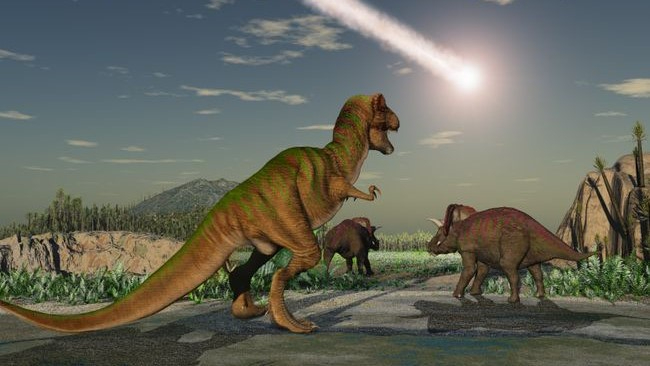
Any day now, it could happen: We could detect an asteroid on an Earth-crossing trajectory. It might be a small one; it might be a big one. It might be tomorrow; it might be a thousand years from now. So what can we do about it?
We know that rocks of all shapes and sizes have struck Earth pretty much since it formed. We see evidence of it on the moon: All those craters preserve a record of the damage. On our planet, craters are rarer, but that's only because wind and water erode the evidence of recent craters, and plate tectonics takes care of the older ones.
Based on evidence from cratering records and observed asteroid populations, we can put together a general picture of how often disaster befalls our world. Every few years, an object about a dozen meters across hits our planet. When it does, it releases the energy equivalent of a decent-sized nuclear bomb. But most of those detonate in the upper atmosphere over open ocean, so we don't tend to notice them.
Related: How many potentially dangerous asteroids narrowly miss Earth each year?
On the larger end, kilometer-scale asteroids strike Earth around every 10 million years. Those have the potential to lead to global calamity — it didn't work out too well for the dinosaurs. Thankfully, while these giant space rocks are devastating, they are exceptionally rare.
In between those extremes lies the sweet spot of danger: large asteroids that could wipe out a city or wreak havoc on a civilization — it would be, by far, the greatest catastrophe to ever happen to us. Those kinds of objects hit Earth every few thousand years. And those are the ones we need to worry about.
To track and defend
So far, the International Astronomical Union's Minor Planet Center, which tracks these sorts of things, has counted 34,152 near-Earth objects (NEOs), which are asteroids whose orbits bring them within 0.05 astronomical units (AU) of Earth's orbit. (One AU is about 150 million kilometers, or 93 million miles — roughly the average distance between Earth and the sun.) These NEOs aren't necessarily threats — the vast majority are almost always well away from Earth — but they are definitely the ones we have to keep a close eye on.
This catalog comes from a collection of observatories on the ground and in space, usually captured on borrowed, extra time. But the upcoming Vera C. Rubin Observatory will provide a major boost to NEO detection, as it will continuously monitor the sky, providing a complete catalog every few nights. Astronomers expect that, with this observatory, we will identify between three and 10 times the current number of known NEOs.
But identifying these objects is just one piece of the puzzle. We also need to know where the asteroids are headed, which requires tracking their movements night after night. And you can't just monitor for a few nights and call it a day; asteroids have a nasty habit of frequently changing their orbits. This is due to their small, irregular size. Small gravitational tugs from the giant planets can alter their trajectories, as can close passes with each other. Even their color and shape make a difference: Depending on the asteroid's reflectivity and spin rate, the sun can unevenly heat the surface of the space rock, causing a slight but persistent shift in momentum.
It's only through rigorous, persistent monitoring that we can confidently identify any potential threat to our home.
Big guns
That's part one of a logical planetary defense strategy. Part two is actually doing something about the threat.
One option is to do nothing: Just let the object hit Earth and hope it doesn't cause too much damage. That's not too appealing, so thankfully, we can take a more active approach.
If we spot the asteroid early enough, we can nudge it out of its current orbit. NASA demonstrated the feasibility of this approach with the success of the Double Asteroid Redirection Test (DART) mission, in which a simple spacecraft slammed headfirst into Didymos, the small moonlet of the asteroid Dimorphos. The impact triggered a measurable shift in Didymos' orbit, suggesting we might just be able to pull off this stunt in the event of a real threat.
If slamming headfirst seems a little too brutal, we can also adjust the asteroid's orbit in more subtle ways. A "gravity tractor" could send a spacecraft in orbit around an asteroid; that spacecraft would slowly change the asteroid's direction, and its gravitational influence would shift the direction of the asteroid as well. We could also paint the threatening rock, causing it to reflect a different amount of sunlight on one side, which would also change its orbit.
The key to making all of this work is early detection. If we spot the asteroid too late, then we won't be able to deliver enough energy to it to change its course. We could maybe alter where on Earth the object strikes — for example, we could attempt to aim it over the open ocean — but that's the best we could hope for.
So, when it comes to preventing the worst disaster humanity could ever see, we need to keep our eyes on the sky, patient and alert for danger.







